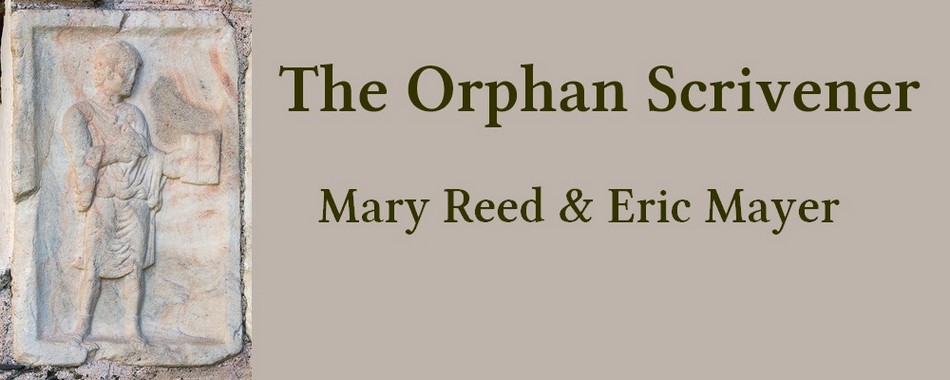ERIC'S BIT or WHITHER HISTORICAL WEATHER
It seems as if it hasn't stopped raining here since last spring. Coming into September we were far above the historic precipitation average for the year and then the remnants of Hurricane Irene drenched us with three inches or so and Tropical Storm Lee drowned us with over nine inches. And it is still raining, even as I type.
By contrast, during the period between June 12 and June 21, 1941 in the southwest part of Shropshire in the UK there was no precipitation at all, according to the Met Office. That was a relief because Mary and I have spent a lot of time writing there, working on a new book. I
know....you don't usually go to the UK -- even in your imagination -- to avoid rain.
The lack of rain back then does pose a challenge to me since I am from the dark and stormy night school. As far as I'm concerned, nothing says drama like a good frog strangler, as Mary calls it. I have to be careful or I find my fictional clouds opening up every time trouble
looms. With this book I'll have to try and create atmosphere more subtly rather than simply pouring it on.
Mary and I decided that since weather records were available for the era we might as well be accurate. But is it really necessary to take historical accuracy in fiction to such lengths? Does the historical backdrop against which the fictional characters act out their imaginary story need to take account of every passing shower or lack thereof?
Certainly the writer of non-historicals, of novels set in the present, more or less gets to make up suitable weather. How many houses in which a murder was committed, or is about to committed if a lurking maniac has his way, have found themselves isolated by snowstorms?
Or so I believed, as I read David Goodis' Black Friday, a contemporary, at the time, crime novel published in 1954. It starts out with a man on the run in the snow-covered streets of Philadelphia finding shelter, of a sort, with a gang of professional thieves.
You'll notice the snow. On the day of the big burglary at book's end it is also snowing and so cold the getaway car nearly refuses to start.
Nothing remarkable there, but since I had weather accuracy in mind I immediately noticed when the protagonist read a newspaper headline about a British airliner crashing in the Mediterranean. Googling quickly revealed to me that such a crash had indeed occurred on
January 11, 1954. Having put an exact date to the narrative, my next impulse was to check the weather. Yes, it had indeed snowed in Philadelphia on the day the book began and it snowed again and was bitterly cold the day of the burglary. Exactly as depicted.
I was startled, to say the least. Are authors really that picky about the weather in contemporary books? Or, I wondered hopefully, had Goodis perhaps begun the book during the January snow and having committed himself that far, decided to maintain the accuracy? Or had he pulled a Georges Simenon and written the whole short novel during a few days-- the same days on which it took place -- and simply used the weather outside his window?
Such were my thoughts when I began reading A Time to Murder and Create, a 1976 mystery by Lawrence Block. Aside from a mention that it was spring, the action wasn't dated. Until PI Matt Scudder sits in a bar, drinking and watching the Knicks lose the fourth game of an NBA playoff series to the Celtics. The next day he survives a knife attack mostly because it has been raining. Uh oh.
I couldn't resist, even though I didn't really want to know. It wasn't hard to discover that the Knicks had been eliminated from the playoffs by the Celtics on April 24, 1974. It was with a sense of dread that I looked to see what the weather had been like April 25, 1974 in New York City, when Scudder's assailant slipped on the wet pavement, his knife missing its mark. I always knew good writers like to get their facts correct but is there no limit? Would I have to abandon forever my penchant for tossing in dark and stormy skies to meet my atmospheric needs?
I clicked to the right historical weather chart and looked down the rows of statistics. Precipitation...
Zero!
And it hadn't rained on April 24th, or the 26th either. Despite what the book said, it had been dry all week.
And all I could say was thank goodness! And thank you Lawrence Block!
AND FINALLY
While we've no desire to rain on anyone's parade, in closing we'll reveal the caterpillar mentioned at the beginning of this newsletter appeared to have no striping. Given folk wisdom has it the width of such stripes predicts the severity of winter weather, their absence is suggestive, but whatever the temperature turns out to be two months hence we trust subscribers won't give the cold shoulder to the next issue of Orphan Scrivener, which will hotfoot it into their inboxes on December 15th.
See you then!
Mary R and Eric
who invite you to visit their home page, hanging out on the virtual washing line that is the web at http://home.earthlink.net/~maywrite/ There you'll discover the usual suspects, including more personal essays, Doom Cat (an interactive game written by Eric), and our growing libraries of links to free e-texts of classic and Golden Age mysteries, ghost stories, and tales of the supernatural. There's also the Orphan Scrivener archive, so don't say you weren't warned! Intrepid subscribers may also wish to pop over to Eric's blog at http://www.journalscape.com/ericmayer/ and/or the Poisoned Pen Press blog at http://www.poisonedpenpress.com/category/blog/
